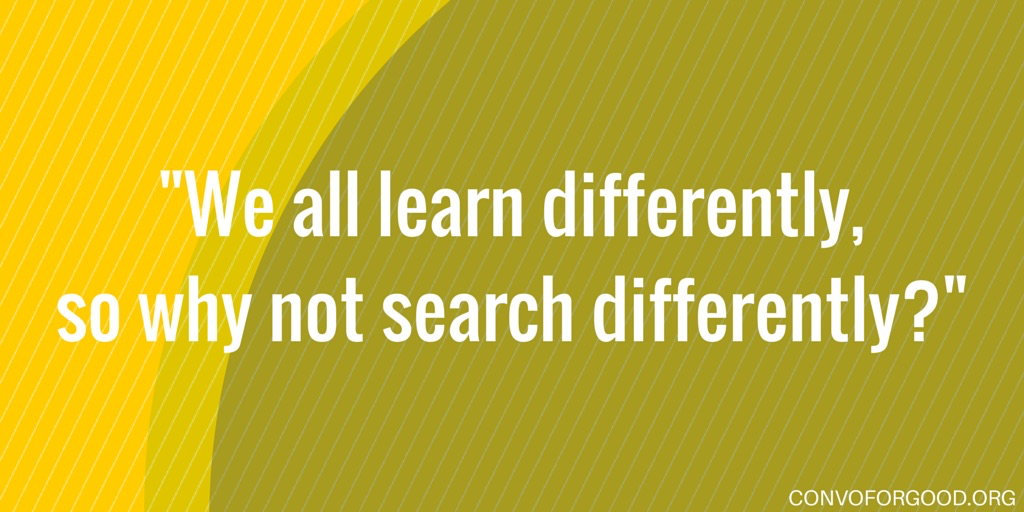At times, the job search can be a tedious, tiresome process. You sift through pages of job postings, send out resumes and cover letters, and wonder if any of it is getting you anywhere. Sometimes you just want to throw your hands up and quit — you begin to doubt yourself and your abilities. But you know it’ll all be worth it in the end, so you keep trucking along. We’re all familiar with this experience, maybe too familiar. Who says job search has to be the same for everyone? We all learn differently, so why not search differently? Here are three tips for staying motivated in your job search, based on the different learning styles of visual, auditory, and kinesthetic.
Visual
If you are a visual learner, you might struggle with reading job posting after job posting or crafting cover letters. You learn best through seeing or watching, or through visual aids rather than words alone. Make your job search easier by taking the time to create a visual-friendly to-do list. Ditch the linear vertical task list with check marks and try something more like these. Get creative! Use poster paper and markers, white boards, color coding, or even decoratively arranged post-it notes. This gives you a creative break from the reading and writing parts of your job search while making your search more manageable. (Score for multi-tasking!) If your to-do list is big enough, hanging it on your wall is a great visual reminder and motivator to get stuff done. Another handy tool to more visually and effectively manage your tasks is Google Keep. Its user-friendly interface will help keep you on top of your job search.
Bonus tip: Make your to-do tasks specific. This contributes not only to your motivation but also your efficiency. Tasking yourself with “Redo resume” is vague, and you won’t know where to start, but “Write list of responsibilities I had during my summer internship” is more of a call to action.
Auditory
If you learn best by listening to instructions or lectures, take a break from scrolling through company websites and reading mission statements. Instead, find someone from your desired industry and listen to them talk. This could mean listening to TED talks by industry experts on topics related to your dream job, or you could go as far as finding a mentor. When you find a mentor through Conversations for Good, you get 30 minutes with someone who is an experienced professional in their respective field(s). When you’re engaging in conversation with your mentor, this is the opportunity to not just listen but listen actively. Come up with questions beforehand, and make sure to write down your questions. Active listening and a 30-minute conversation can make a big difference in your job search.
Kinesthetic
You’re a kinesthetic learner if you learn best by doing — getting out and trying things out for yourself. Sitting at the computer is necessary for some stages of the job search process, but as a kinesthetic learner, you’ll do best by getting out from behind the screen. Reach out to companies you’re interested in and see if they have a job shadowing program that you can participate in. Even if it’s not the number one company you want to work for, job shadowing gives you an inside look to the industry you want to work in that you would not get otherwise by browsing a website. Volunteering is another way to break the job search monotony. Find causes that interest you and could lead you to a career. Sites like VolunteerMatch make it easy to find local volunteer opportunities, and you can even sort by different categories such as advocacy & human rights, animals, or arts and culture. Even if there’s nothing that directly aligns with the job you want, volunteering is still a great opportunity to open new doors as well as show you care about something.
Try all of these approaches to job searching, even the ones outside of your typical learning style, to see which works best for you. The results may surprise you!






